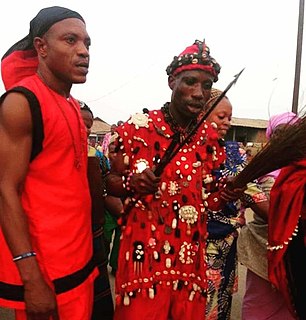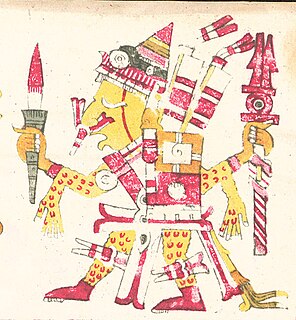 W
WBabalú-Aye, Oluaye, Ṣọpọna, or even Obaluaiye, is the orisha of healing in all its aspects, of the land, of respect for the elderly and protector of health. It is called whenever necessary to prevent infirmity.
 W
WErra is an Akkadian plague god known from an 'epos' of the eighth century BCE. Erra is the god of mayhem and pestilence who is responsible for periods of political confusion. He was assimilated to Nergal at some point.
 W
WGoddess I is the Schellhas-Zimmermann-Taube letter designation for one of the most important Maya deities: a youthful woman to whom considerable parts of the post-Classic codices are dedicated, and who equally figures in Classic Period scenes. Based on her representation in codical almanacs, she is considered to represent vital functions of the fertile woman, and to preside over eroticism, human procreation, and marriage. Her aged form is associated with weaving. Goddess I could, perhaps, be seen as a terrestrial counterpart to the Maya moon goddess. In important respects, she corresponds to Xochiquetzal among the Aztecs, a deity with no apparent connection to the moon.
 W
WNergal, Nirgal, or Nirgali is a deity that was worshipped throughout ancient Mesopotamia with the main seat of his worship at Cuthah represented by the mound of Tell-Ibrahim. Other names for him are Erra and Irra.
 W
WResheph was a deity associated with plague, war, and sometimes thunder in ancient Canaanite religion. The originally Eblaite and Canaanite god was then more famously adopted into ancient Egyptian religion in the late Bronze Age during the Eighteenth Dynasty of Egypt, also becoming associated with horses and chariots.
 W
WṢọ̀pọ̀na is the god of smallpox in the Yoruba religion. The Yoruba people took their traditions about Shapona to the New World when they were transported in the slave trade. He has become known as Babalú-Ayé, among many other names, in the Orisha religion that developed in the Americas.
 W
WIn Aztec mythology and religion, Xipe Totec or Xipetotec was a life-death-rebirth deity, god of agriculture, vegetation, the east, spring, goldsmiths, silversmiths, liberation and the seasons. Xipe Totec was also known by various other names, including Tlatlauhca, Tlatlauhqui Tezcatlipoca and Youalahuan. The Tlaxcaltecs and the Huexotzincas worshipped a version of the deity under the name of Camaxtli, and the god has been identified with Yopi, a Zapotec god represented on Classic Period urns. The female equivalent of Xipe Totec was the goddess Xilonen-Chicomecoatl.